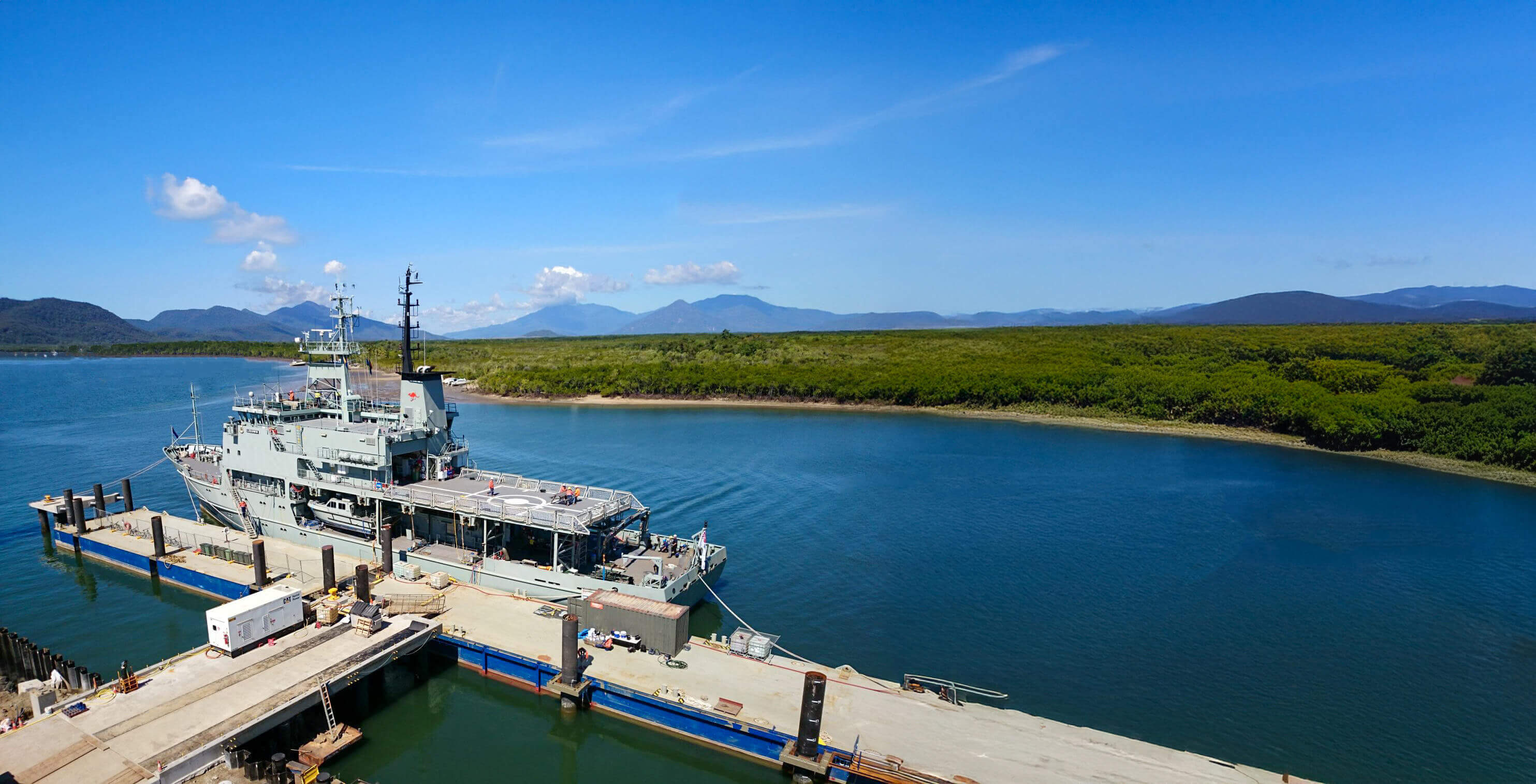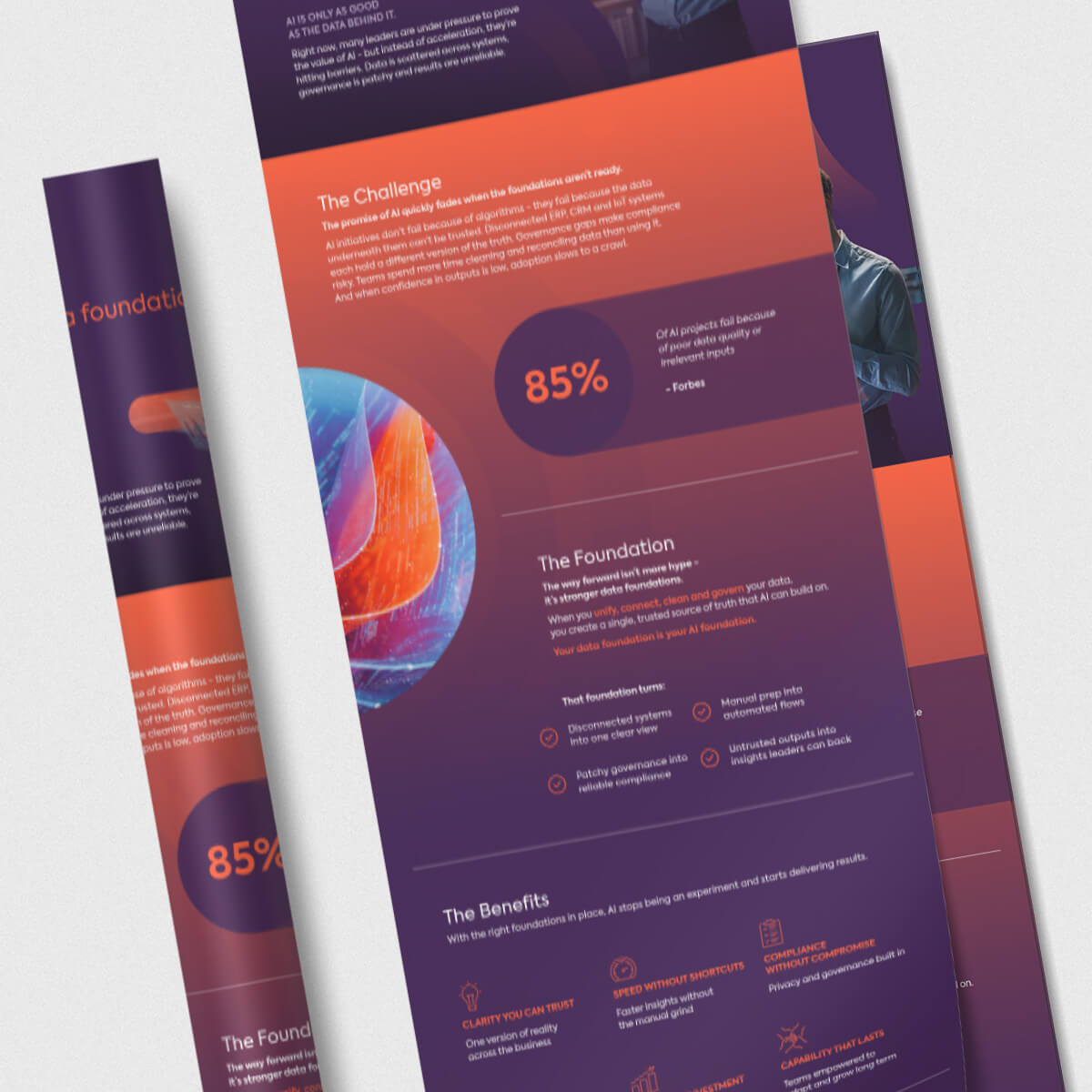Start with your core systems, then introduce a data platform between your source systems and reporting tools. This allows data to be cleaned, modelled and made accessible for both enterprise-wide reporting and self-service use.
Ports North develops and manages port facilities that are vital to the growth of regional centres in North Queensland and to Queensland’s export performance.
Its ports handle bulk shipments of sugar, molasses, silica sand, zinc, fuel and fertiliser, as well as live cattle, project cargo and general freight. Ports North also manages extensive property, marina and tourism facilities, particularly in Cairns.
From cruise terminals and parking systems to lease agreements and critical infrastructure, it’s a diverse operation with a lot of moving parts. Like many organisations, Ports North had been focused on day-to-day operations. Over time, that meant some systems became outdated and the technology environment needed attention.
A shift in mindset and modernisation

A few years ago, Ports North’s executive team recognised they were facing a significant technical debt challenge. Legacy systems and processes had built up over time, making it harder to operate efficiently and limiting the organisation’s ability to adapt quickly to the changing needs of its customers.
It was time to move on from ageing platforms and start building a more agile, data-driven organisation. Managing such a diverse business, with assets classified as critical infrastructure, meant the stakes were too high to keep relying on spreadsheets and disconnected systems.
"We’d been operating with ageing platforms, which made reporting difficult and created too many manual approaches to operations,” says Jonathan Gaynor, Executive Manager of the Project Management Office (PMO).
The shift wasn’t just about replacing systems. It was about setting the business up to make smarter decisions, backed by credible, up-to-date data. In a short period, Ports North has replaced almost every core system and built a smarter, more agile operation powered by real-time insights.
Here’s how that shift happened.
Laying the groundwork
With such a complex business, the finance system was a critical element. Microsoft Dynamics 365 Finance and Operations was selected as the core platform, with other specialist platforms introduced to manage areas like HR, marina, and parking operations.
Jonathan joined in late 2023, just after the initial D365 F&O rollout. What he found was a solid foundation. The tech stack had been upgraded, the finance platform was strong, and the business was in a much better place.
But turning that step change into real value wasn’t straightforward. At first we had information coming from multiple platforms and sources.
We had a powerful platform underneath us, but we couldn’t access the data easily. There was no architecture behind the reporting.”
That’s when the next wave of work began, and the relationship with the Fusion5 Data and Analytics team started. It began with developing a finance report and has since developed into a broader, long-term data platform and strategy.
“That first engagement with the Fusion5 data team solved a problem,” says Jonathan."And it sparked a bigger conversation about our approach to data and reporting.”
A platform that fits
A better approach was proposed, evaluated, and introduced: building a data platform between the source systems and Power BI. This middle layer extracts relevant data from different platforms, reshapes it into a clean, business-friendly format, and supports both enterprise and self-service reporting.
It reduces the impact of running queries directly against the source system and makes it much easier to connect and work with data from multiple sources.
The first version of the platform was built using Synapse Analytics. Six months later, it was migrated to Microsoft Fabric, Microsoft’s next-generation, low-maintenance SaaS platform built around Power BI.
“We got a fully operational data visualisation platform, upgraded to Fabric with almost no disruption,” says Jonathan.
The migration was done in under a week.”
Built for real use, not just best practice
The strategy and approach followed Microsoft’s best-practice frameworks, but this wasn’t about ticking boxes. It was about making it work for Ports North.
“Our whole organisation is under 100 people, with just five in IT,” says Jonathan.

So, we needed something low touch that could handle the diversity and complexity of our data. We don’t want an army of data engineers. We just want accurate, real-time reporting that doesn’t break.”
Each layer of the platform, from the source extraction to the semantic model, is designed to run quietly in the background. Business users see clean, familiar data in the language they know, not system jargon.
Staff can explore, filter, and create what they need. And when something more complex is needed, a support agreement is in place. "We’ve got access to the capability we need for the customised and more complex reporting. Everything else, we try to handle ourselves.”
One platform, many uses
What started as a request for a finance report has grown into a full data strategy and platform. It now supports reporting and business intelligence across Ports North’s diverse asset base.
A single data platform serves both trusted enterprise reports and ad-hoc self-service analysis, all pulling from a consistent, reliable source of truth.
“It’s helped us move away from that culture of fixed reports,” says Jonathan.
Now the team can start with a question and go to the data to explore it. That’s a big shift.”
Getting ready for what’s next
The payoff isn’t just better reports. It’s a better way of running the business. "Historically, we didn’t update systems for several years. Now we’ve got always-on, cloud-first platforms with updates every six months. That changes how you work.” Jonathan says the bigger shift is cultural.
We’ve gone from set-and-forget to continuous improvement. These systems are agile assets, and when they’re well set up, they help the whole business run better and make better decisions.”

Why it matters
Ports North is proof that you don’t need a huge team or a big-city postcode to build something powerful.
With the right foundation and a smart, deliberate approach, they’ve created a flexible, scalable data environment that helps them see their business more clearly and respond faster.
Whether it’s reconciling customer data, managing assets or rolling out new dashboards, they now have the tools, models, and mindset to make it happen.
“We’re at the start of a journey,” says Jonathan.
But we’ve got a platform that can grow with us. And we’re building the confidence and capability to use it well.”
And maybe most importantly, they’re building a way of working that future-proofs their operations and lets them focus on what matters most: running a diverse and essential business, built for Queensland’s future.
Ready to modernise your data platform?
Fusion5 helps government agencies and asset-intensive organisations modernise legacy systems and build agile, data-driven strategies. Using Microsoft Dynamics 365, Power BI, and Microsoft Fabric, we design scalable platforms that support real-time reporting, self-service analytics, and continuous improvement, even for small teams.
Q&A
What’s a good approach to modernising legacy systems for reporting?
Can Microsoft Fabric work for small teams with limited IT resources?
Yes. Microsoft Fabric is ideal for lean organisations. Its low-maintenance, SaaS-based design makes it possible to run powerful, real-time reporting without needing a large internal data team.
What’s the benefit of using Microsoft Fabric over direct Power BI connections?
Microsoft Fabric creates a structured layer between your systems and Power BI. This improves performance, enables better governance, and makes it easier to combine data from multiple sources.
How can organisations build a data-driven culture?
By giving teams access to consistent, trusted data and enabling self-service reporting. A well-designed data platform helps shift the mindset from static reports to continuous insight and improvement.




